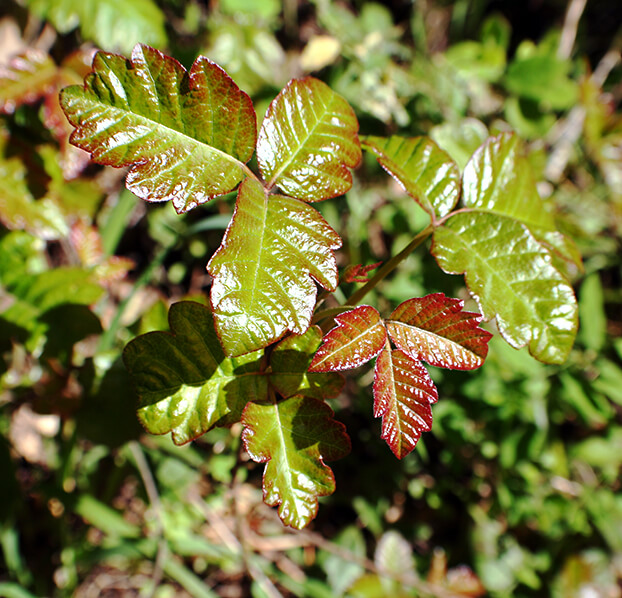
Species Information
Pacific Poison Oak

| Status |
Least Concern: species that have a widespread and abundant population and are not currently threatened. |
| Family |
Anacardiaceae (Cashew) |
| Description | Fuzzy green leaves in clusters of three |
| Habitat | Forests, woodland, chapparal |
| Reproduction | Sprout from rhizomes or from seeds |
| Threats |
Habitat loss and encroachment |
| Range | Pacific Northwest |
Pacific poison oak (Toxicodendron diversilobum) is a species of deciduous shrub native to western North America. It is a member of the Anacardiaceae family, which includes other species of poison ivy, poison sumac, and poisonwood.
Pacific Poison Oak is found in abundance in moist and wooded environs, as well as areas close to freshwater rivers. It is an important nutritional source for deer, birds, and other wildlife, as it contains high levels of phosphorous, sulfur, and calcium. Additionally, the flowers of this plant provide sustenance for bees and beetles who visit to drink its sweet nectar. Studies have also revealed that it is an ideal nesting site for the federally endangered Least Bell’s Vireo and is effective in limiting the spread of invasive plant species.
Even slight exposure to poison oak causes many people to break out in an extremely annoying rash which, in rare cases, can actually be life-threatening. Poison oak is native to California and grows as a shrub in open sunlight or as a climbing vine in shaded areas. Its leaves are divided into three leaflets with scalloped, toothed, or lobed edges. It is important to remember the rhyme, “leaves of three, let it be”. During the spring, its foliage is bright green, and in late summer it turns red and slightly brownish orange.
When hiking, it is best to remain on trails with legs covered to avoid exposure. If exposed, it is important to remove clothing and wash well with an oil cutting soap.
